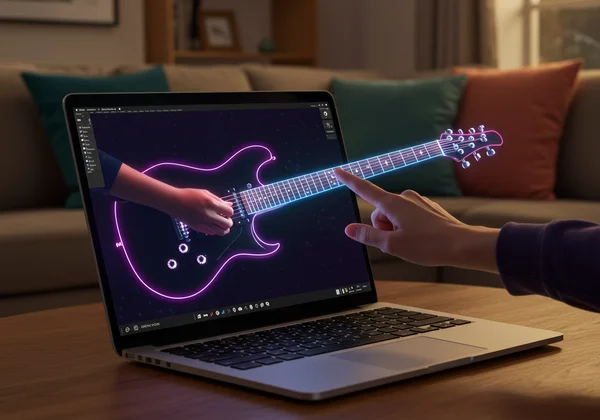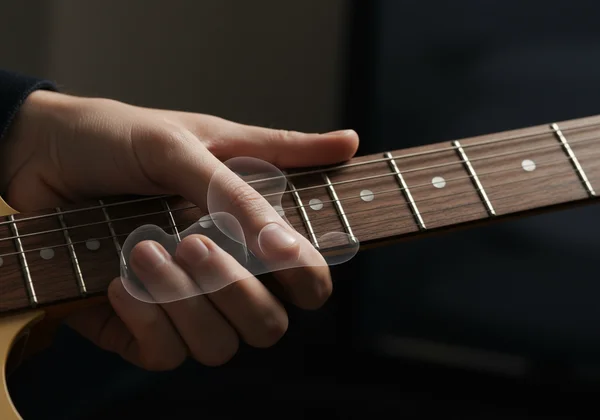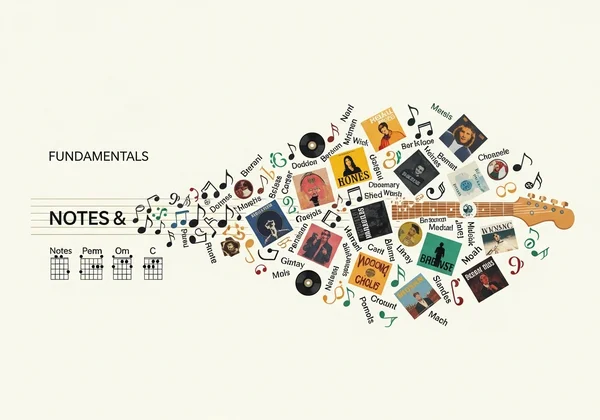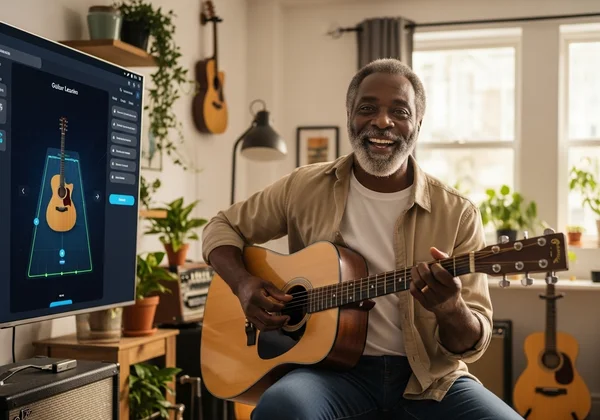Master 10 Basic Guitar Chords Online with VirtualGuitar.org
Ready to finally learn guitar? Don't let the journey seem daunting! In this guide, we'll walk you through the 10 most essential basic guitar chords, perfect for beginners, and how you can master them instantly using our free, online virtual guitar platform. No expensive gear, no downloads – just pure playing fun and fundamental learning at your fingertips. Can I learn guitar online for free? Absolutely, and we're here to show you how with our intuitive tool. To get started right away, you can try our free tool and begin your musical adventure.

Why These 10 Basic Guitar Chords Are Essential for Beginners
Learning guitar can feel overwhelming with countless chords and techniques. However, focusing on a core set of beginner guitar chords provides a solid foundation. These aren't just random shapes; they are the building blocks that will unlock a vast repertoire of songs, allowing you to play along to your favorite tunes much faster than you might think.
The Foundation of Thousands of Songs
Imagine this: you're able to play hundreds, even thousands, of popular songs with just a handful of chords. That's the power of these 10 basic guitar chords. From classic rock anthems to modern pop hits and soulful folk ballads, many songs rely on simple, repetitive chord progressions built from this very set. Mastering them means you're not just learning isolated shapes, but gaining the ability to connect them and create actual music. This immediate gratification is key to staying motivated when learning guitar.
Understanding Open Chord Shapes & Finger Placement
The chords we'll focus on are primarily open chord shapes. This means they utilize open strings (strings that aren't fretted) along with fretted notes. They are fundamental because they are easier to fret cleanly than complex barre chords and sound full and resonant. Understanding proper finger placement is crucial for clear notes and avoiding unwanted buzzing. On our online guitar simulator, you can visually see the finger positions and hear the result immediately, making it a perfect tool for practicing these shapes.

Your First 5 Essential Virtual Guitar Chords with Our Online Tool
Let's dive into your first five must-know beginner guitar chords. Here's a pro tip: The best way to learn is by doing! Open our virtual guitar tool in another tab and let's get started together. You can easily play guitar online using your keyboard or mouse.
G Major: Your Gateway Chord
The G Major chord is a warm, full-sounding chord found in countless songs. It's often one of the first chords beginners learn. On our online guitar simulator, identify the notes on the fretboard that correspond to the G Major shape. Experiment by clicking each string individually to ensure it rings out clearly.
- Visual Aid: Think of the classic "cowboy" G – usually played with fingers on the 3rd fret low E, 2nd fret A, open D, open G, open B, and 3rd fret high E.
C Major: The Versatile Chord
C Major is another cornerstone chord, offering a bright and versatile sound. It pairs beautifully with G and many other chords. Practice transitioning from G to C on the virtual guitar. The keyboard mapping feature on our platform makes these transitions smoother, allowing you to mimic real-time playing.
- Visual Aid: Typically fretted on the 3rd fret A string, 2nd fret D string, open G, 1st fret B string, open high E.
D Major: A Bright Sound
D Major adds a cheerful, bright element to your playing. It's a slightly smaller chord shape, primarily played on the thinner strings. Pay attention to muting the lower strings (E and A) to get a clean sound.
- Visual Aid: Focus on the 2nd fret G string, 3rd fret B string, 2nd fret high E.
E Minor: The Melancholy Master
For a touch of emotion, E Minor is your go-to. It's one of the easiest chords to learn, requiring only two fingers. Its melancholic sound is perfect for adding depth to songs. This is a great one to practice immediately on your online guitar.
- Visual Aid: Simple: 2nd fret A string, 2nd fret D string.
A Minor: A Classic Companion
A Minor is a close relative of E Minor and shares a similar emotional quality, albeit slightly different. It's another relatively easy shape, perfect for practicing smooth transitions with E Minor and C Major.
- Visual Aid: Place fingers on the 2nd fret D string, 2nd fret G string, and 1st fret B string.
Tips for Clean Sound & Avoiding Buzz
Achieving a clean sound is vital for any guitarist. When using our online guitar tool, listen carefully for any muted or buzzing notes. Here are quick tips applicable even with an online guitar simulator:
- Finger Pressure: Apply enough pressure with your fingertips directly behind the fret.
- Finger Curl: Keep your fingers curved so they don't touch adjacent strings.
- Thumb Position: Support your hand with your thumb centered on the back of the neck. Practice these 5 chords using the online virtual guitar. Remember, repetition is key. You can easily switch between virtual acoustic guitar and virtual electric guitar tones to hear how these chords sound differently.
Expanding Your Repertoire: 5 More Key Virtual Guitar Chords
Now that you've got the first five down, let's expand your toolkit with five more crucial virtual guitar chords that will significantly increase the number of easy guitar songs you can play.
A Major & E Major: Essential Additions
A Major: Similar to A minor, but with a brighter feel. Often played with all three fingers on the 2nd fret of the D, G, and B strings. E Major: The full, resonant sound of E Major is indispensable. It's closely related to E Minor – you just add one more finger! These two chords are fantastic for building simple progressions. Play guitar online and try alternating between A Major and E Major to get comfortable with their feel.
F Major (Simplified): Your First Step to Barre Chords
F Major is notorious for being a hurdle for beginners, typically requiring a barre. However, there's a simplified version that's much more accessible and still sounds great! This version avoids the full barre, making it a perfect way to ease into more complex barre chords later. With our virtual guitar, focus on getting the high E, B, and G strings to ring out clearly.
- Simplified F: 1st fret B string, 2nd fret G string, 3rd fret D string. You might also add the 1st fret high E string if comfortable.
D Minor: Adding Depth
D Minor brings a contrasting, often melancholic, feel to your chord vocabulary. It's a beautiful chord that adds significant color to your playing. Practice transitioning to and from D Major to hear the difference.
Am7: A Smoother Alternative
Am7 (A Minor 7) is a lovely chord that often sounds "jazzier" or "smoother" than a standard A Minor. It's surprisingly easy to play, often requiring just two fingers. This chord adds a sophisticated touch to your playing with minimal effort.
Mastering Chord Transitions Online
Learning individual chords is one thing; making them flow smoothly is another. Mastering chord transitions online is where the real progress happens. Using our online tool, practice switching between the chords you've learned. Focus on minimizing the time between one chord shape and the next. The more fluid your transitions, the more musical your playing will sound. The keyboard mapping on the online guitar simulator can help you develop muscle memory quickly.
Putting Chords to Work: Easy Guitar Songs & Progressions
Now for the fun part: putting these virtual guitar chords into action! The beauty of these 10 chords is their versatility in forming easy guitar songs and popular progressions.
Famous 4-Chord Progressions to Try
Many hit songs use simple 4-chord progressions. Here are a few common ones you can try on our online tool:
-
G - D - Em - C (The "Pop" Progression): This sequence is incredibly prevalent. Try strumming through it slowly on our free online guitar. Think of songs like "Don't Stop Believin'" by Journey or "Someone Like You" by Adele.
-
C - G - Am - F (The "Canon" Progression): Another widely used progression, often associated with Pachelbel's Canon in D, but adapted for guitar. This one unlocks countless folk and pop tunes. Use the online guitar to feel the melancholic yet hopeful flow.

Practice Routines for Virtual Guitar Chords
Consistency is key to mastering basic guitar chords. Here’s a simple practice routine you can follow daily using our online virtual guitar:
- Chord Check (5 mins): Go through each of the 10 chords individually. Ensure each note rings out cleanly. Use the online guitar simulator to quickly identify and correct any issues.
- Transition Practice (10 mins): Pick two chords and practice switching between them 10-20 times. Then, pick another pair. Focus on smooth, quick changes.
- Progression Play-Through (10 mins): Choose one or two of the 4-chord progressions and play them repeatedly. Try to maintain a steady rhythm. Feel free to explore different virtual acoustic guitar or virtual electric guitar tones.
- Free Play (5 mins): Just have fun! Strum some chords, try to make up a simple melody. This builds confidence and creativity.
Regular, short practice sessions are far more effective than infrequent, long ones. You can easily access this free online guitar tool anytime, anywhere, making it ideal for consistent practice.
Start Strumming Today: Your Virtual Guitar Journey Awaits!
Learning basic guitar chords is your most crucial first step on this musical journey, and we've designed our virtual guitar platform to make it incredibly accessible. You've just unlocked 10 essential chords that form the backbone of countless songs – imagine the possibilities! With our free online guitar tool, you can practice, experiment, and build your confidence without any barriers of cost or equipment.
Unlock your musical potential and experience the joy of playing anytime, anywhere. Whether you're an aspiring guitarist, a bedroom producer, or just a curious explorer, our free virtual guitar platform is your perfect companion. Don't wait another moment – your virtual guitar journey awaits! Visit our site to start playing now and explore more features like different guitar tones and keyboard mapping. What chord will you master first? Share your progress with us!

Frequently Asked Questions About Learning Guitar Chords Online
Can I learn guitar chords online for free?
Yes, absolutely! Our platform provides a completely free way where you can learn and practice basic guitar chords and much more without any cost or subscriptions. Our goal is to make guitar learning accessible to everyone, everywhere.
What is the fastest way to learn basic guitar chords?
The fastest way involves consistent, focused practice. Use our online guitar tool to immediately see and hear the chords. Focus on correct finger placement, apply enough pressure, and practice smooth transitions between chords. Short, daily sessions (15-30 minutes) are more effective than infrequent long ones. Our online guitar simulator provides instant feedback to accelerate your learning.
Is our online guitar simulator good for absolute beginners learning chords?
Our platform is an excellent resource for absolute beginners! Its intuitive interface allows you to click on strings or use keyboard mapping to play notes and chords instantly. This immediate feedback helps beginners understand finger placement and hear the sounds of different chords without needing to buy a physical guitar. It's the perfect zero-barrier entry point for learning guitar. You can discover your potential today.
How can I play guitar chords using my computer keyboard?
Our online guitar tool features a unique keyboard mapping function that allows you to play guitar on keyboard. Each string and fret position is mapped to specific keys on your computer keyboard, providing a more immersive and efficient playing experience than just using a mouse. This is a powerful advantage for practicing chords and scales, helping you develop finger dexterity and musical intuition. Just visit our website and try the keyboard controls!